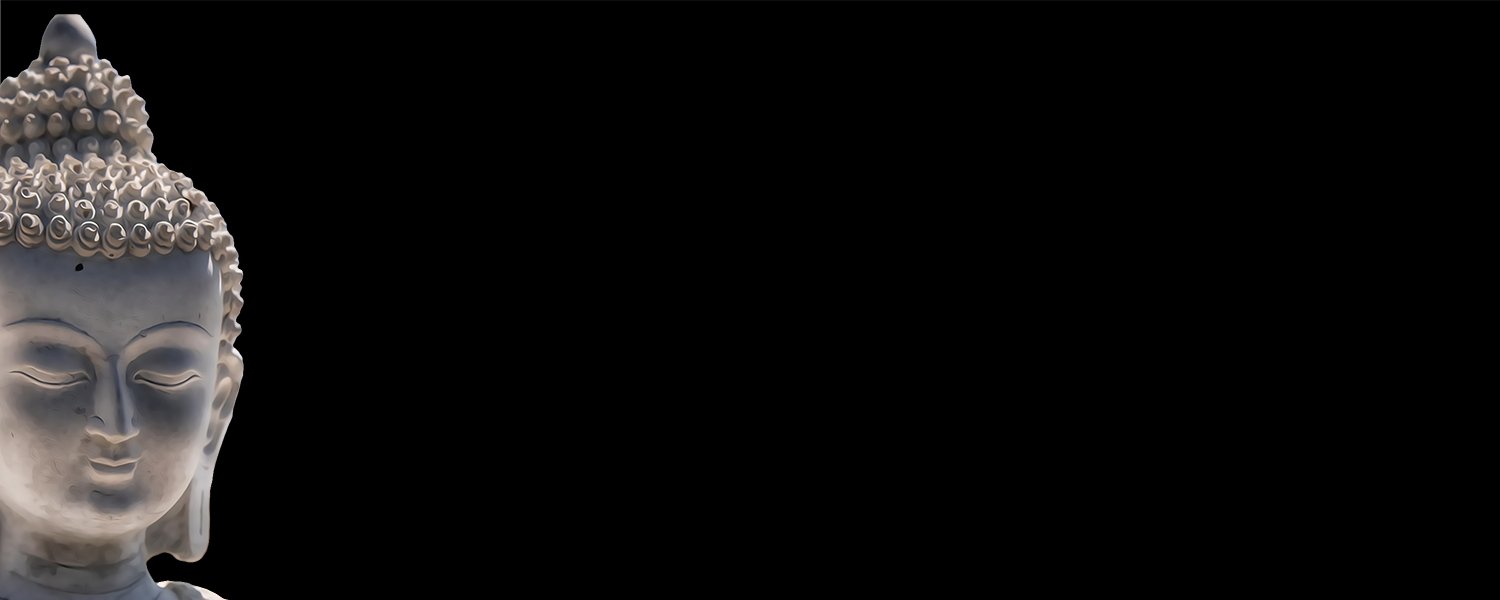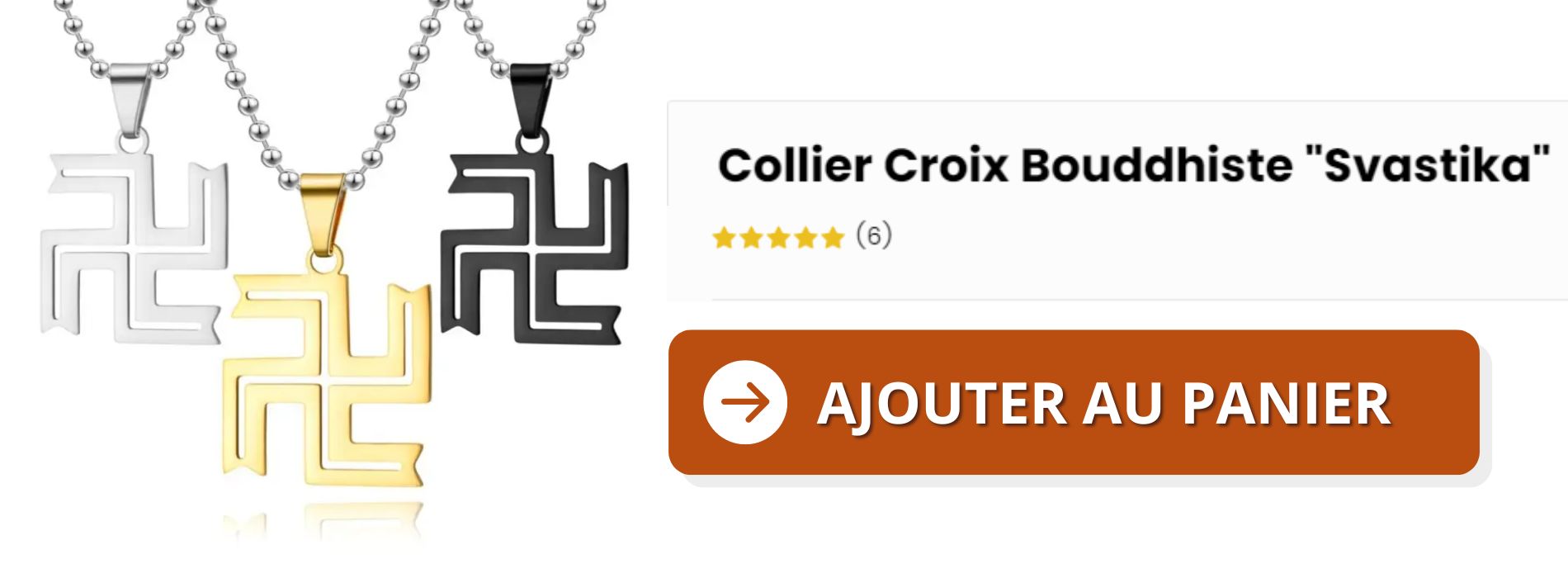What are the symbols of Buddhism and their meanings?
If you are here, you are certainly asking yourself this question, and you are in the right place to know the answer! discover now the most represented Buddhist symbols.
Buddhism began as early as the 4th or 6th century BCE when Siddharta Gautama began spreading his teachings on suffering, nirvana and the renaissance in India. Siddhartha himself was opposed to accepting images of himself and used many different symbols to illustrate his teachings.

There are eight different auspicious symbols of Buddhism, and many say these represent the gifts God gave to Buddha when he achieved enlightenment.
What do the different Buddhist symbols mean?
The role of the image in early Buddhism is not known, although many surviving images can be found because their symbolic or representational nature is not known. was not clearly explained in ancient texts.
Among the oldest and most common symbols of Buddhism are the stupa, the wheel of Dharma and lotus flower. The wheel of dharma, traditionally represented by eight spokes, can have different meanings.
At first it only meant royalty (a concept of the "monarch of the wheel, or chakravatine), but began to be used in a Buddhist context on the Pillars of Ashoka in the 3rd century BC
The Wheel of Dharma is generally considered to refer to the historical process of the teaching of Buddha Dharma; the eight rays refer to the noble eightfold path. The lotus, as well, can have several meanings, often referring to the intrinsically pure potential of the mind.
Take advantage of this special offer while stocks last!

Click here to see all our Buddhist bracelets
Other ancient symbols include the Trisula, a symbol used since the 2nd century BC. which combines the lotus, the diamond vajra staff and a symbolization of the three jewels (The Buddha, the Dharma, the Sangha).
The swastika (Swatika) was traditionally used in India by Buddhists and Hindus as sign of luck. In East Asia, the swastika is often used as a general symbol of Buddhism. Swastikas used in this context may face left or right.
Early Buddhism did not depict the Buddha himself and may have been aniconic. The first indication of human representation in Buddhist symbolism appears with the footprint of Buddha.

The eight auspicious Buddhist Symbols form the body of Buddha. (Ashtamangala)
- The parasol represents the head of Buddha
- The two fish represent the eyes of Buddha
- The vase, the neck of Buddha
- The lotus represents his language
- The golden dharma wheel represents his feet
- the victory banner represents the body of Buddha
- the conch represents the words of Buddha
- And the endless knot represents the mind of Buddha.
It is a sacred suite of Eight Signs endemic to a number of Dharmic Traditions such as Hinduism, Jainism, Buddhism , Sikhism.
Symbols or "symbolic attributes" are the yidam and teaching tools. Not only do these attributes, these energetic signatures, point to qualities of enlightened spirit, but they are the investiture that adorns these enlightened “qualities.”
Click here to see all our Buddha statues< /em>
Many enumerations and cultural variations of the Ashtamangala still exist. Originally, groups of eight auspicious symbols were used in India during ceremonies such as the inauguration or the coronation of a king.
A first group of symbols included: throne, swastika, swastika, handprint, hooked knot, vase of jewelry, libation gourd of water, pair of fish , bowl with lid.
In Buddhism, these eight symbols of good fortune represent the offerings made by the gods to Shakyamuni Buddha immediately after he achieved enlightenment.
1. The Buddhist parasol or umbrella (The Chatra)

An umbrella can protect people of different elements, like the sun or the rain. In this context, a parasol or umbrella can mean protection from suffering and harmful forces. It can also mean the pleasure of enjoying the cool shade it provides.
Learn more about buddhist parasol
2. The Two Golden Fish

Two golden fish In ancient times, the two fish were drawn to symbolize the Ganges and Yamuna rivers. Through interpretation, it has become synonymous with luck and fortune. It is also the courage and fearlessness to face the ocean of suffering and to be able to swim freely like fish in water.
Learn more about the two golden fish
3. The Conch

This large shell was used in many countries as a traditional battle horn. In Buddhism, the white conch shell curling to the right can signify the deep, joyful sound of Dharma teachings. It is representative of the awakening that the disciples receive when they hear these teachings. The conch shell can also mean people's awakening from ignorance.
Learn more: The Symbol of the Buddhist conch
4. The lotus flower

The lotus has been used in many Buddhist teachings to convey the true nature of all humanity. The roots of the lotus plant are buried deep in the mud, but it still grows above the murky water and blooms into a beautiful, sweet-smelling flower. The lotus can be analogous to how we rise from our suffering to achieve enlightenment, beauty and clarity. Different colored lotus plants mean different things in Buddhism.
A white lotus is a symbol of mental and spiritual purity. Other colors and their meanings include:
- Red - This represents heart, love and compassion.
- Pink - This represents the historical Buddha.
- Purple - This represents mysticism.
- Blue - This represents wisdom, as well as control of the senses.
- Red - This represents heart, love and compassion.
- Pink - This represents the historical Buddha.
- Purple - This represents mysticism.
- Blue - This represents wisdom, as well as control of the senses.
Learn more about The lotus flower and its meaning
5. The Banner of Victory

This symbol represents how Buddha defeated the demon Mara. This demon, in Buddhism, is synonymous with passion, lust and pride. The Victory Banner is used to remind people that one must overcome one's own pride, lust and passions in order to achieve enlightenment.
Learn more about, The Vase of Treasures / The Urn of Wisdom (Bumpa)
6. The treasure vase or urn of wisdom

A vase can be filled with many different things. The vase, in Buddhism, can mean the rain of health, wealth, prosperity and all the good things that come with enlightenment.
It represents health, longevity, wealth, prosperity, wisdom and the phenomenon of space.
Learn more theurn of wisdom
7. The wheel of Dharma or Dharmachakra

The Wheel of Dharma This wheel is also called the dharma chakra or the Dhamma chakra and is often used to represent Buddha himself .
It has also become universally the symbol of Buddhism. The dharma wheel has eight spokes, which represent the eightfold path of the Buddha.
Learn more about the The wheel of Dharma (Dharmachakra) Symbol of Buddhism
8. The eternal knot

The interweaving of lines in the eternal knot is said to symbolize how everything is connected. It can also represent how religion and secular affairs, as well as compassion and wisdom, are united and related to each other.
The "endless knot" or "eternal knot" represents the intertwining of wisdom and compassion; represents the mutual dependence of religious doctrine and secular affairs.
Learn more about The symbolic meaning of the endless knot in Buddhism
Other Buddhist Symbols with a significant high
Bodhi leaf and Bodhi tree

The Bodhi Tree, also known as Bo (from the Sinhala Bo), was a large and very old sacred fig tree located in Bodh Gaya (about 100 km from Patna in the Indian state of Bihar), under whom Siddhartha Gautama, the spiritual master and founder of Buddhism later known as Gautama Buddha, is said to have attained light , or Bodhi.
In religious iconography, the Bodhi tree is recognizable by its heart-shaped leaves, which are usually in plain view. It takes 100 to 3000 years for a bodhi tree to fully grow.
The term "Bodhi Tree" is also widely applied to existing trees, particularly the Sacred Fig which grows at the temple of the Mahabodhi, which is a direct descendant of the original specimen.
This tree is a frequent destination for pilgrims, being the most important of the four main Buddhist pilgrimage sites.
Other sacred Bodhi trees that have great significance in the history of Buddhism are the Anandabodhi tree in Sravasti and the Bodhi tree in Anuradhapura, Sri Lanka. Both are believed to have been propagated from the original Bodhi tree.
Other sacred Bodhi trees that have great significance in the history of Buddhism are the Anandabodhi tree in Sravasti and the Bodhi tree in Anuradhapura, Sri Lanka. Both are believed to have been propagated from the original Bodhi tree.
Learn more The Meaning of the Bodhi Tree
Buddha-footprint

The Buddha footprint is a print of one or both feet of Gautama Buddha. There are two forms: natural forms, as found in stone or rock, and artificial forms.
Many of the "natural" ones, of course, are recognized as not being actual footprints of the Buddha, but replicas or representations of them, which can be considered Cetiya (Buddhist relics) as well as an anionic and symbolic representation of the Buddha in his early days.
Buddha footprints abound throughout Asia, dating from different periods. They often bear distinctive signs, such as a Dharmachakra in the center of the sole, or the 32, 108 or 132 auspicious signs of the Buddha, engraved or painted on the sole.
Learn more about Meaning of the Buddha's Footprint.
Empty Throne< /span>

An empty throne resides in the concept of "emptiness", an important element of mysticism. This symbol also symbolized the kingship of Siddhartha Gautama.
Learn more The Empty Throne in Buddhism< /a>
The Buddhist lion

The lion is one of the most important symbols in Buddhism.The lion is the symbol of royalty which symbolized what < strong>Buddhawas part before attaining enlightenment.
Take advantage of this special offer while stocks last!

This is also the power of the Buddha's teaching and is often compared to the roar of a lion.
Learn more The Lion in Buddhist Religion
Swastika or Swastika

In Buddhist tradition, Swastika or Swastika symbolizes the feet or footprints of the Buddha and is often used to mark the beginning of texts. Modern Tibetan Buddhism uses it as clothing decoration.
With the spread of Buddhism, it passed into the iconography of China and Japan where it was used to designate plurality, abundance, prosperity and long life.
Learn more about Swastika, the Buddhist Swastika
The Four Heavenly Kings

The Four Guardian Kings - In the Buddhist faith, the four heavenly kings are four guardian gods, each of whom watches over a cardinal direction of the world.
Learn more The Four Kings Celestials of the Buddhist Religion
The eyes of Buddha

Buddha eyes - also called wisdom eyes, this pair of eyes is generally represented on the four sides of the Buddhist sanctuaries known as stupas. The symbol indicates the omniscient eyes and omniscients of Buddha and is representative of the presence of the Lord all around.
the line curly under the eyes in the middle (where the nose is on a face) is the sanskly figure which symbolizes the unit of everything And also means that the only way to reach enlightenment is by the teachings of the Buddha . The point between the eyes is indicative of the third eye, which represents the spiritual awakening.
Learn the The Buddha eye | Meaning & amp; History
Vajra
the vajra is a baddhist tantric symbol representing great spiritual power and firmness of the mind. It symbolizes one of the three main branches of Buddhism, the vajrayana .
formed as a ribbed spherical head mass, the vajra symbolizes the attributes of a diamond (purity and indestructibility) as well as the properties of a lightning (irresistible energy) . It also represents an endless creativity, a skillful and powerful activity.
in the Tibetan Buddhism, the Vajra is also a ritual tool and is known as Dorje. It is used with a bell by the Lamas and other Sadhana practitioners.
Learn more about vajra, ritual object with five branches widely used in Tibetan Buddhist ceremonies.
Ensō
in the Zen Buddhism , Ensō is a Sacred symbol often called "The Circle of Lights". It is a circle drawn by hand in one or two brush strokes to express a moment when the mind is free to let the body create. Some artists draw Ensō like an open circle, while others complete the circle.

At the beginning, Ensō may seem like a coarsely drawn circle, but it symbolizes a lot of things: strength, elegance, the universe, our true self and the More intimate, beauty in imperfection, and the uniqueness of all things in life.
It also symbolizes the perfect meditative state or illumination. Ensō is a visual expression of the Soutra of the Heart. The shape is empty and the void is a form - a circle in which everything is contained inside, or also excluded by its limits.
Learn more about ENSō | The Circle of Lights in Buddhism
almond (om)
OM, also written as alms, is a mystical and sacred syllable which comes from Hinduism, but which is now common to Buddhism and other religions.
In Hinduism, OM is the first sound of creation and symbolizes the three stages of existence: birth, life and death.
The best known use of OM in Buddhism is in OM Mani Padme Hum.
by singing or looking at the syllables, we invoke the compassion of the bodhisattva and instill in it. The letters alum (OM) symbolize the body, spirit and word of the Buddha; "Mani" is for the path of teaching; "Padme" for the wisdom of the path, and "hum" designates wisdom and the way to it. Learn more about What does the symbol AUM/OM mean?
The three jewels are also called the three shelters. When a person accepts Buddhist teaching and wants to integrate it into their life, the traditional way is to take refuge with the three jewels, the most precious elements of the Buddhist path. The first jewel is the Buddha, illuminated or awake , as well as our own Buddha nature. The second gem is the Dharma, the path following the teachings of the Buddha and leads to awakening. The Sangha is the third precious gem. The three jewels are also a symbol for the spirit of diamond , which can cut through any illusion. The yellow jewel symbolizes the Buddha, the blue jewel symbolizes the dharma and the red jewel symbolizes the Sangha. Learn more about The three jewels The alms cut is one of the main symbols of monastic life. Each monk and each nun receives a cup when they are initiated and wins with them wherever they go. They accept any food offered for their food and serve as a blessing for the one who gives. In this way, the bowl symbolizes the midfielder between the donor and the recipient. According to legend, Siddhartha aesthetics practiced austerity until it is almost hungry. A young woman offered him a bowl of gold filled with rice and milk, which he took. After eating, he threw his bowl into the river, as a symbol of renunciation. This story symbolizes another aspect of the Middle Way, which is to avoid extreme practices and extreme attachments. Learn more about, Buddhist object | The bowl in Aumône From Antiquity, the bells of the temples invite monks and nuns to meditation and ceremonies. The sweet sound of a bell during the song helps the disciples to focus on the present moment and to free themselves from daily concerns. >
a feeling of peace and calm can be reinforced by the sound of the bell. for this reason, Wind bells are often hung on the eating stupas and temples to create peaceful and meditative spaces, with their sound tintements. The bell ringing is a symbol of the voice of the Buddha. It also represents wisdom and compassion, and is used to call Celestial deities to protection and to keep evil spirits away. Many old temples have bells at the entrances to ring before entering. The bells are available in a wide range of sizes and styles. < Span style = "color: #000000;"> Learn more about The meaning of Buddhist bells see also: Furin, wind carillon & amp; Wind bell The six colors of the Buddhist flag represent the six colors of the aura of the Buddha when it has reached illumination. Blue represents universal compassion, yellow for the midfielder, red for blessings, white for purity and liberation and orange for wisdom. The sixth color is the combination of other colors and is not displayed. click here to see all our Buddhist flags The flag was designed in 1880 by an American journalist, Colonel Henry Steele Olcott. The horizontal stripes represent the harmony between the races, and the vertical stripes represent peace between nations, all under the shield of the wisdom of the Buddha. Learn more about: Buddhist flags | History and meaning 
The three Buddhist jewels

The Bol à Aumons

Buddhist bell < /h3>


Buddhist flag























































3 comments
PION Jean-Jacques
Le bouddhisme m’a permis de faire taire le “murmure des fantômes” lié à 18 ans de maltraitance et de retrouver une santé physique et mentale. Grâce à lui, j’ai pu atténuer le poison de l’égo et avoir de la compassion pour ceux qui m’avaient profondément méprisé ou me méprisent encore. Je sais enfin qui je suis et le long chemin qu’il reste encore à faire. Quelqu’un a dit: “ce n’est pas le chemin qui est difficile, mais le difficile qui est le chemin”. Bon chemin à tous !
Dohet Marthe
Je suis très intéressée par le bouddhisme et ce qu’il représente. Merci beaucoup pour les enseignements qui sont mentionnées
Nevil
Le bouddhisme est très interressant